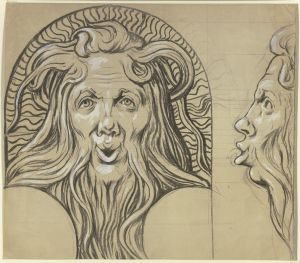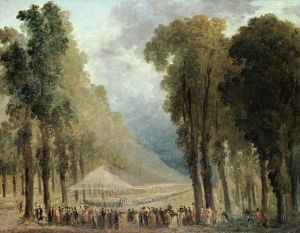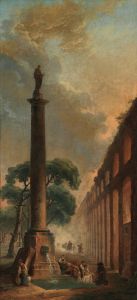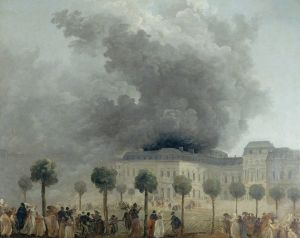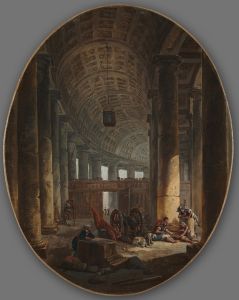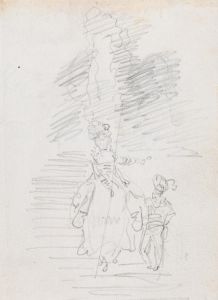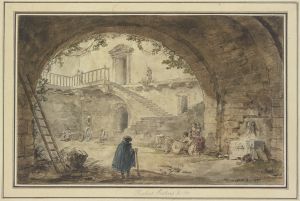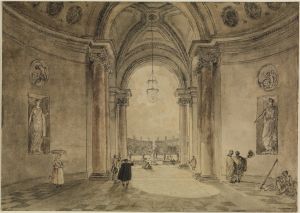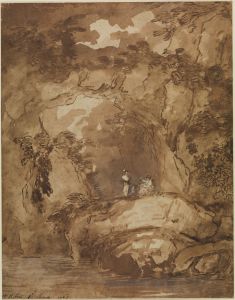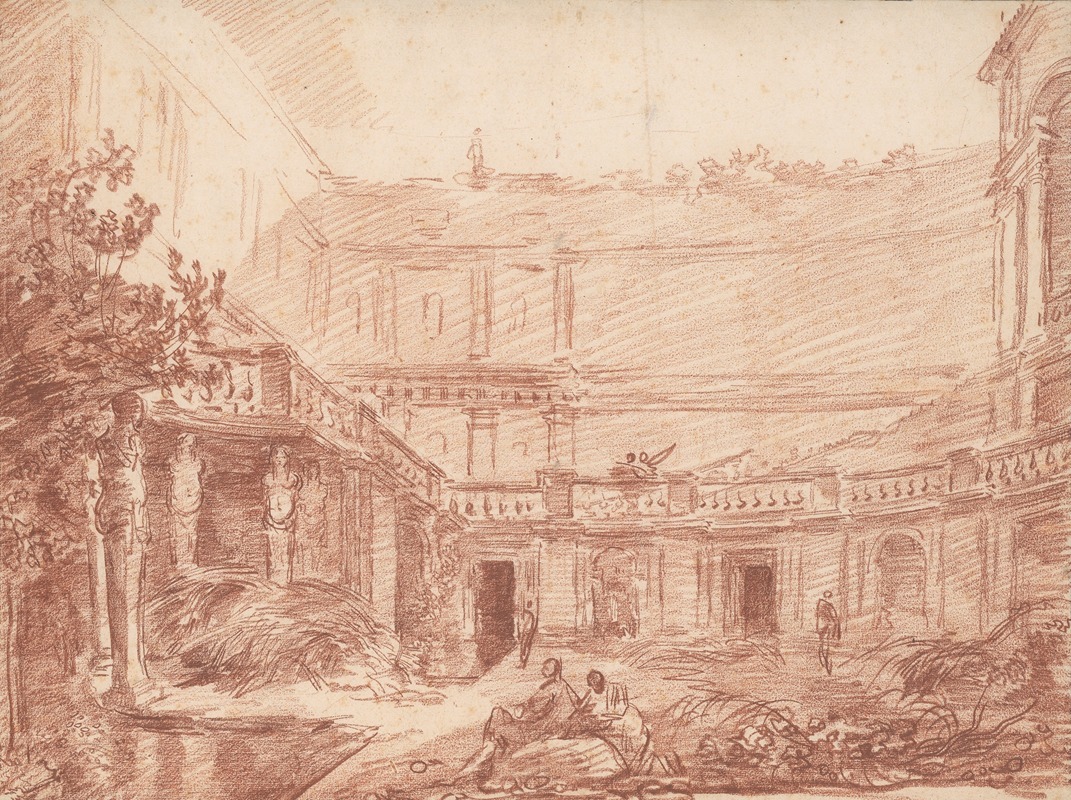
The Nymphaeum of the Villa di Papa Giulio, Rome
A hand-painted replica of Hubert Robert’s masterpiece The Nymphaeum of the Villa di Papa Giulio, Rome, meticulously crafted by professional artists to capture the true essence of the original. Each piece is created with museum-quality canvas and rare mineral pigments, carefully painted by experienced artists with delicate brushstrokes and rich, layered colors to perfectly recreate the texture of the original artwork. Unlike machine-printed reproductions, this hand-painted version brings the painting to life, infused with the artist’s emotions and skill in every stroke. Whether for personal collection or home decoration, it instantly elevates the artistic atmosphere of any space.
Hubert Robert, a prominent French painter known for his landscapes and architectural scenes, created "The Nymphaeum of the Villa di Papa Giulio, Rome" in the 18th century. This work exemplifies Robert's fascination with the ruins and classical architecture of Rome, a city that significantly influenced his artistic career. Born in 1733, Robert spent over a decade in Italy, from 1754 to 1765, where he immersed himself in the study of ancient Roman sites and the burgeoning neoclassical movement.
"The Nymphaeum of the Villa di Papa Giulio, Rome" is a testament to Robert's skill in capturing the romantic allure of ancient ruins. The Villa di Papa Giulio, also known as Villa Giulia, was constructed in the mid-16th century for Pope Julius III. It is renowned for its exquisite Renaissance architecture and lush gardens, which were designed by a team of architects including Giorgio Vasari, Bartolomeo Ammanati, and Jacopo Barozzi da Vignola. The nymphaeum, a monumental fountain or water feature, was a common element in Roman gardens and served as a place of relaxation and contemplation.
In this painting, Robert depicts the nymphaeum with a sense of grandeur and decay, a hallmark of his style. The composition likely features overgrown vegetation and crumbling stonework, evoking a sense of nostalgia and the passage of time. Robert's use of light and shadow enhances the atmospheric quality of the scene, drawing the viewer into a world where nature and architecture coexist in harmonious ruin.
Robert's work is characterized by its meticulous attention to detail and his ability to convey the emotional resonance of historical sites. His paintings often reflect the 18th-century European fascination with antiquity and the sublime beauty of decay. "The Nymphaeum of the Villa di Papa Giulio, Rome" is no exception, as it captures the viewer's imagination and invites them to ponder the history and stories embedded within the ancient stones.
Throughout his career, Hubert Robert earned the nickname "Robert des Ruines" for his extensive body of work depicting ruins. His paintings were highly sought after by collectors and patrons who appreciated his ability to blend realism with romanticism. Robert's influence extended beyond his lifetime, as his works continued to inspire artists and architects interested in the classical past.
Today, Hubert Robert's paintings, including "The Nymphaeum of the Villa di Papa Giulio, Rome," are celebrated for their artistic and historical significance. They offer a window into the 18th-century European perspective on antiquity and the enduring allure of Rome's architectural heritage. Robert's legacy as a master of landscape and architectural painting remains firmly established, and his works are held in prestigious collections around the world, where they continue to captivate audiences with their timeless beauty and evocative power.





